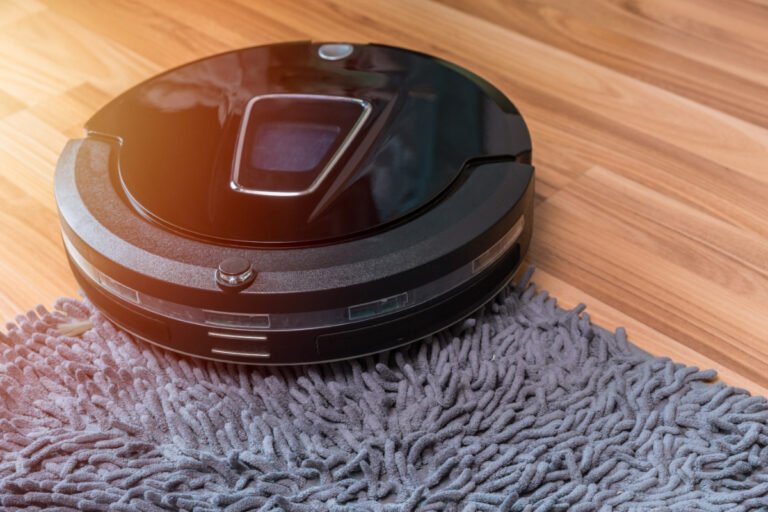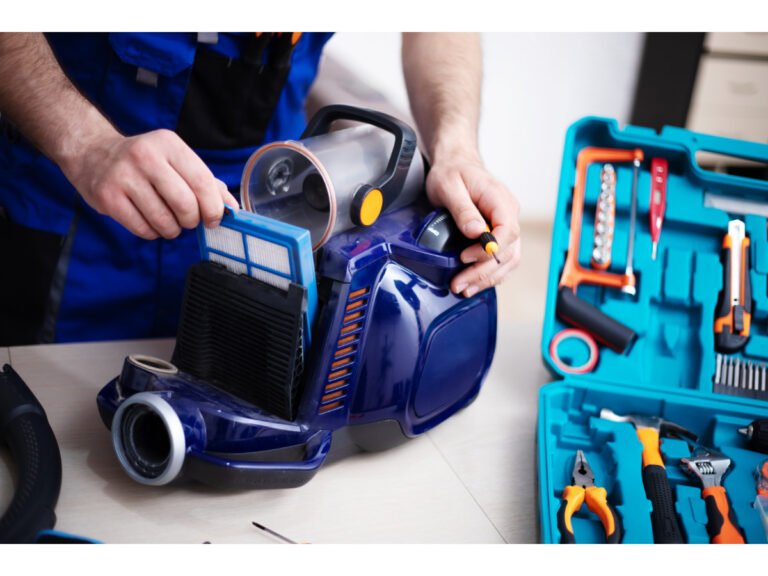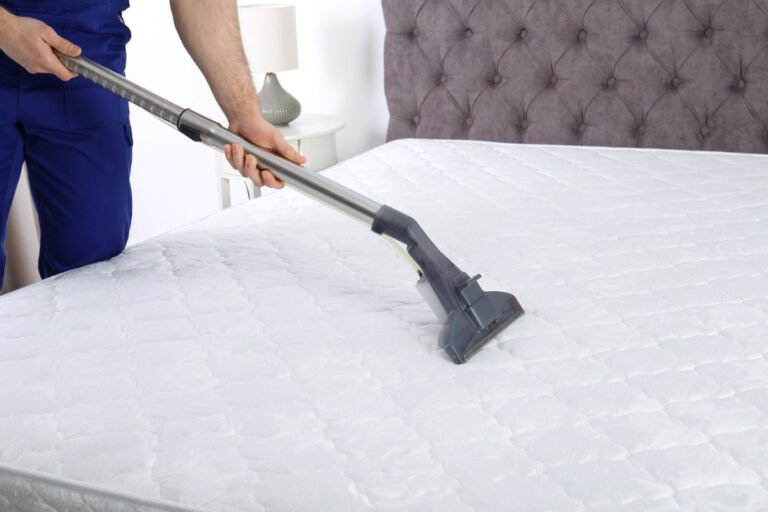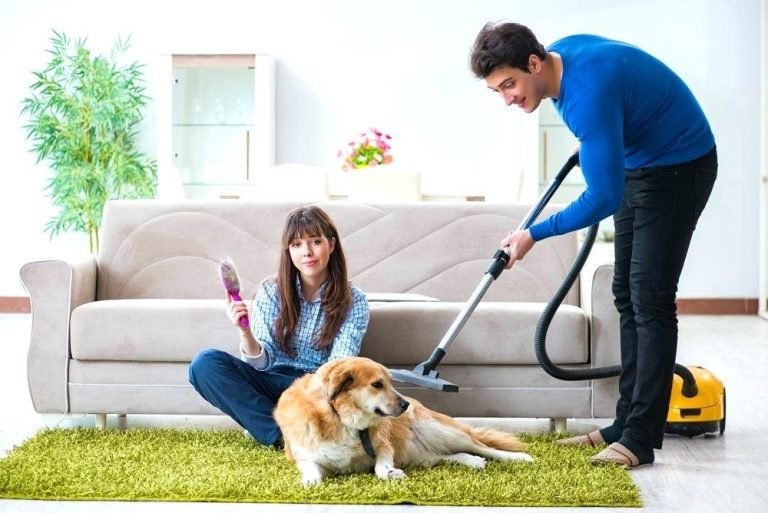How to Attach Vacuum Cleaner for Above Ground Pool
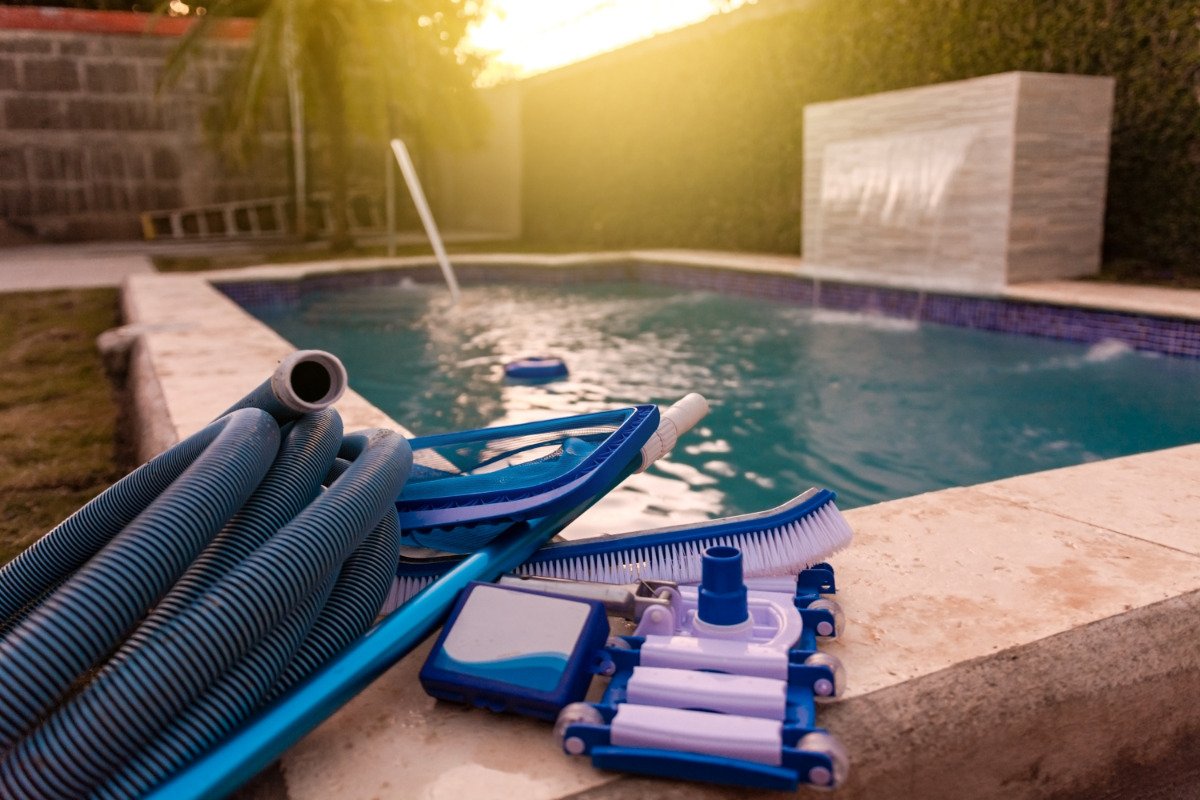
Swimming in an above-ground pool is a simple joy on a hot summer day. Maintenance is necessary to keep the pool clean and appealing. Has anybody wondered how to attach a vacuum cleaner to an above-ground pool?
Imagine a pool of sparkling water where you may rest and escape the heat. Imagine a pool with murky water, trash, and algae. Is it less appealing? Maintaining your above-ground pool is essential. It preserves your aquatic oasis’s beauty, safety, and durability.
Learn how to install a vacuum cleaner in an above-ground pool for summer readiness.
Why Use a Vacuum Cleaner for Above-Ground Pools
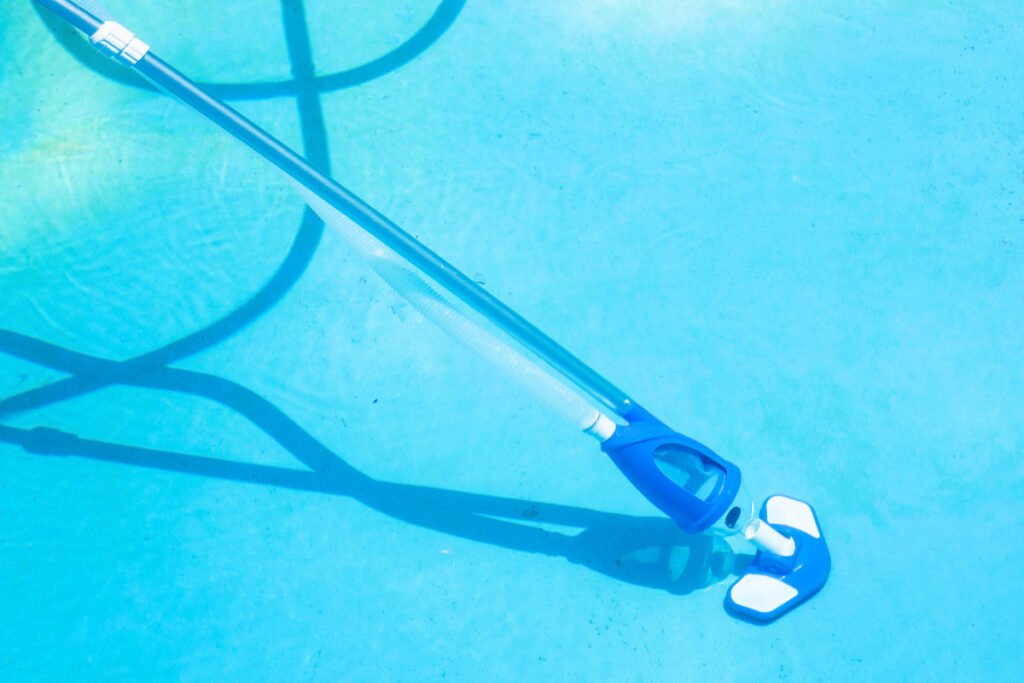
Manually cleaning an above-ground pool is time-consuming and difficult. Did you realize an above-ground pool vacuum cleaner may make a big difference? Here are some reasons:
- Efficient Cleaning: A vacuum cleaner cleans above-ground pools better than a roller. It can detect dirt, trash, and other particles that are difficult to see.
- Time-saving: Vacuum cleaners save time over manual cleaning. Pool cleaning is fast and efficient, freeing up time for other activities.
- Better Pool Hygiene: A vacuum cleaner improves pool hygiene. It may eliminate dirt, debris, and other particles that pose health risks and filthy your pool.
- Cost-Effective: A vacuum cleaner for an above-ground pool may seem unnecessary, but it may save you money over time. Poor upkeep might lead to pricey repairs.
Types of Vacuum Cleaners for Above-Ground Pools
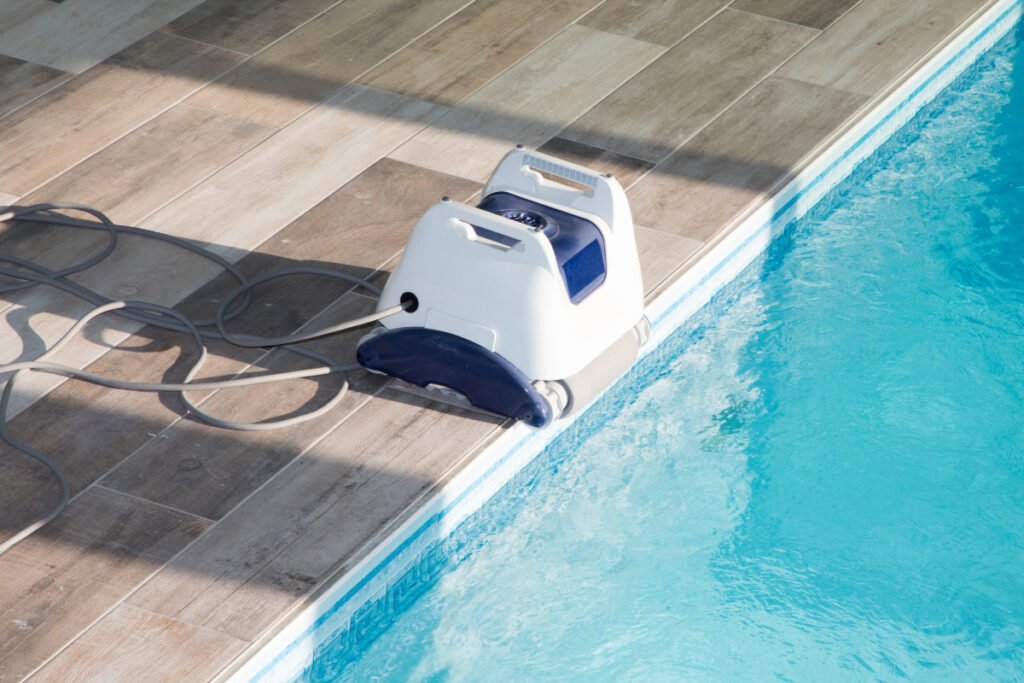
If you own an above-ground pool, you will want to invest in a vacuum cleaner to keep your pool water clean and clear of debris. Several types of vacuum cleaners are designed specifically for above-ground pools, each with unique features to suit different needs.
👉🏻Pressure-Side Pool Vacuum Cleaners
These vacuum cleaners employ water pressure to suction. They have a debris-collecting filter bag to reduce pool filtration system stress. Pressure-side pool vacuum cleaners cost more but clean better and need less maintenance.
👉🏻Suction-Side Pool Vacuum Cleaners
When you connect these pool vacuum cleaners to the suction side of your pool’s pipes, the pump in the pool creates pressure. They are ideal for light cleaning tasks and are budget-friendly. However, they require more maintenance as they can clog easily, and you may need to clean the filter more frequently.
👉🏻Robotic Pool Vacuum Cleaners
Robotic pool vacuum cleaners are self-contained units that require no connection to your pool’s plumbing system. They are easy to use and offer exceptional cleaning capabilities. They have advanced features like multiple brushes, intelligent navigation systems, and programmable cleaning cycles. Robotic pool vacuum cleaners are the most expensive option but offer the most convenience and performance.
Step-by-Step Guide to Attaching a Vacuum Cleaner
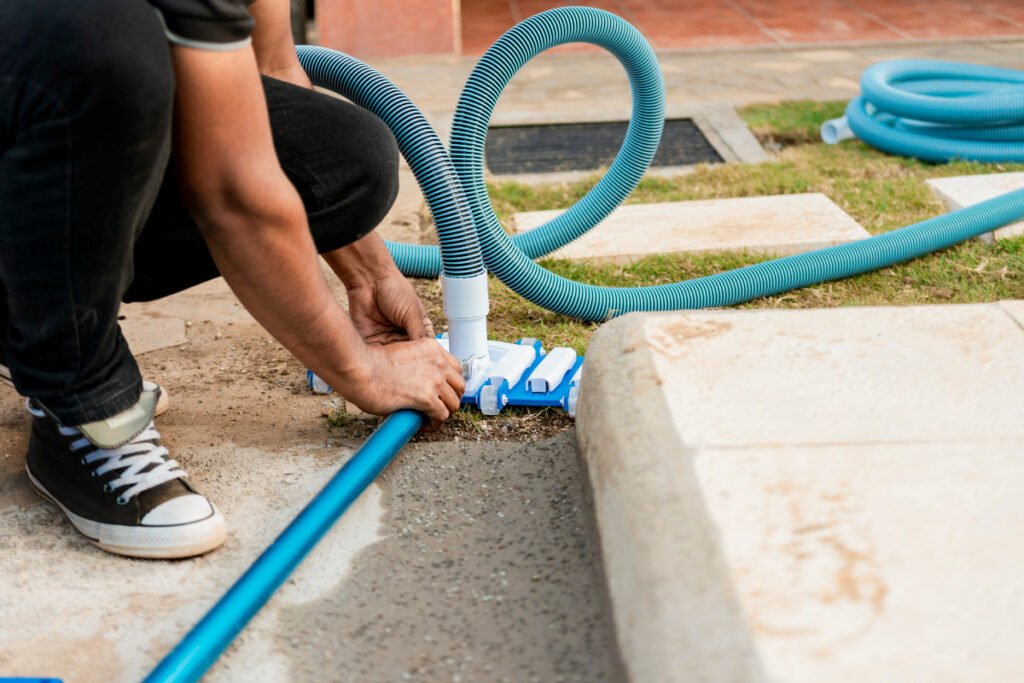
Attaching a vacuum cleaner to your above-ground pool may seem daunting, but it’s a straightforward process you can accomplish in a few simple steps. Follow the instructions below:
- First, turn off the pool’s pump and skimmer.
- Secure the vacuum head to the telescopic pole.
- Insert the vacuum hose into the vacuum head and lock it into place.
- Connect the other end of the vacuum hose to the pool’s skimmer or dedicated vacuum port. If using the skimmer, remove the basket and attach the hose to the suction port. If using the dedicated vacuum port, simply connect the hose to it.
- Once the hose is connected, turn on the pump and prime the vacuum hose by holding it over the return jet. It will remove any air that has entered the hose.
That’s it! You’ve successfully attached your vacuum cleaner to your above-ground pool. Now, you’re ready to start the cleaning process.
💯Tips for Attaching a Vacuum Cleaner
- Ensure the vacuum head and hose are compatible with your above-ground pool’s size and shape.
- Ensure all the connections are secure and tight so there are no leaks.
- If using the skimmer, replace the basket once vacuuming is complete.
- Regularly check the vacuum head and hose for any damage or wear and tear. Replace if necessary.
Attaching the Vacuum Hose and Head

Now that you have determined the type of vacuum cleaner best suited for your above-ground pool, it’s time to attach the hose and head. Here’s how:
Step 1️⃣: Clear the Skimmer or Dedicated Vacuum Port
Before attaching the hose and head, ensure the skimmer or dedicated vacuum port is clear of any debris or obstructions. It will ensure proper suction and efficient cleaning.
Step 2️⃣: Connect the Hose to the Head
Attach one end of the hose to the vacuum head, ensuring it is securely in place. The other end of the hose will be attached to the skimmer or dedicated vacuum port.
Step 3️⃣: Connect the Hose to the Skimmer or Dedicated Vacuum Port
Insert the other end of the hose into the skimmer or dedicated vacuum port. If your pool has a skimmer, remove the basket and attach the hose to the suction port. Attach the hose straight to your pool’s suction port.
Step 4️⃣: Prime the Hose
Once you connect the hose to the skimmer or dedicated vacuum port, it’s time to prime it. Hold the free end of the hose over the pool return, allowing water to flow through the entire hose length. It will remove any air pockets and ensure proper suction.
Step 5️⃣: Attach the Hose to the Vacuum Plate (Optional)
Some above-ground pools may require a vacuum plate attachment to ensure proper suction. If your pool requires this, attach the plate to the skimmer and connect the hose to the plate.
Preparing Your Pool for Vacuuming
Before attaching the vacuum cleaner, you must take a few essential steps to prepare your pool for effective cleaning. Following these tips for effective pool cleaning will ensure thorough and hassle-free vacuuming:
🌀Remove Large Debris
Skim your pool’s surface with a net to remove large debris, such as leaves and bugs. It will prevent the vacuum cleaner from getting clogged and ensure optimal suction.
🌀Brush Your Pool Walls and Floor
Brushing your pool walls and floor will loosen any dirt or algae attached to the surface. It will make it easier for the vacuum cleaner to pick up the debris.
🌀Check and Adjust the Water Level
Ensure that your pool’s water level is within the recommended range. Too high or too low water levels can affect the vacuum cleaner’s performance. Adjust the water level if necessary.
🌀Backwash Your Filter
If you have a sand or DE filter, backwash it to remove any debris trapped in the filter’s sand or powder. It will increase the filter’s efficiency and ensure optimal suction for the vacuum cleaner.
🌀Check and Clean the Skimmer Basket
Check your skimmer basket and remove any debris that may have accumulated. A clean skimmer basket allows for better water flow and ensures the vacuum cleaner is not clogged.
Cleaning Different Areas of the Pool
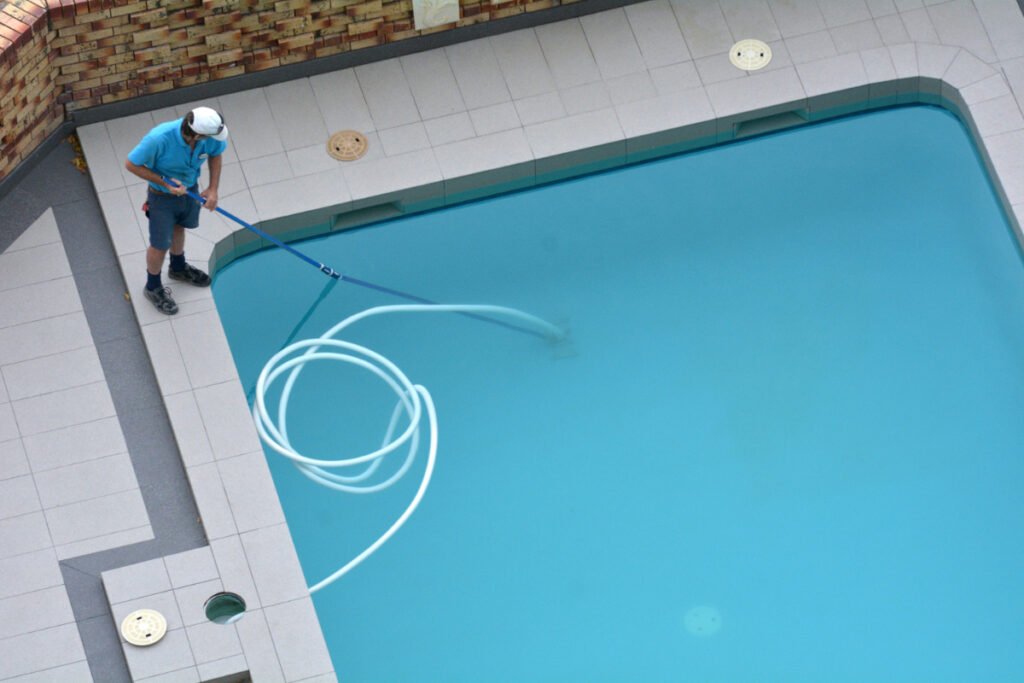
Now that the vacuum cleaner is properly attached, it’s time to start cleaning your above-ground pool. Knowing how to clean different pool areas is crucial to ensure thorough and efficient cleaning.
🧽Cleaning the Walls
The walls of your above-ground pool can accumulate algae, dirt, and other debris. To clean the walls, attach the vacuum head to a telescopic pole and turn on the vacuum. Make a circular motion with the head, beginning at the top and working down to the bottom.
🧽Cleaning the Floor
The floor of your above-ground pool can collect leaves, dirt, and other small debris. To clean the floor, attach the vacuum head to the telescopic pole and turn on the vacuum. Move the head back and forth slowly, covering the entire floor. Be sure to focus on areas where debris accumulates, such as corners and crevices.
🧽Cleaning Hard-to-Reach Areas
Hard-to-reach areas such as the corners and behind ladders can accumulate difficult-to-remove debris. To clean these areas, attach the vacuum head to the telescopic pole and turn on the vacuum. Move the head in a circular motion, focusing on the hard-to-reach areas. You can also use a handheld pool skimmer to remove any remaining debris.
Remember to take breaks and be patient while cleaning your above-ground pool. Depending on the pool’s size, cleaning may take 30 minutes to an hour or more. Once you’ve completed vacuuming, turn off the pump and detach the vacuum head and hose from the skimmer or dedicated vacuum port.
Removing and Storing the Vacuum Cleaner

Now that you’ve completed the vacuuming process, it’s time to properly remove and store the vacuum cleaner. Follow these steps to ensure its longevity:
- Detach the vacuum hose and head from the skimmer or dedicated vacuum port.
- Slowly pull the vacuum hose and head out of the water, allowing any excess water to drain.
- After disconnecting the hose from the vacuum head, you should drain any water that may still be within the hose.
- The vacuum head and hose should be thoroughly washed and dried with clean water.
- If the filter bag or cartridge is full, remove and clean it before storing.
When putting away the vacuum cleaner, you should ensure it is totally dry to avoid mold or mildew formation. Keep it in a spot that is clean, dry, and out of the direct sunshine and temperatures that are too high or too low.
Troubleshooting Common Vacuum Cleaner Issues
Even with proper maintenance, issues with your above-ground pool vacuum cleaner may still arise. Here are some tips for troubleshooting common problems:
🛠Clogged Hose or Head
If you see a reduction in the suction force, inspect the hose and the head for any obstructions. You may get rid of them by using a wire hanger that has been straightened or by pouring water through the hose.
🛠Leaks
Leaks can occur in the vacuum hose, head, or connections. Check for any visible damage or cracks and replace parts as necessary.
🛠Inefficient Cleaning
If your vacuum cleaner is not cleaning effectively, check that the filter is clean and debris-free. You may also need to adjust the suction power or brush height depending on the type of debris you are cleaning.
🛠Damaged Parts
If any parts of the vacuum cleaner are damaged, they may need replacement. Check the manufacturer’s instructions for replacement parts and follow their recommendations.
🛠Low Water Flow
If there is low water flow in your pool, it can cause issues with the vacuum cleaner’s effectiveness. Check that all valves and skimmers are open and that the water level is sufficient for optimal performance.
Maintaining Your Pool’s Cleanliness
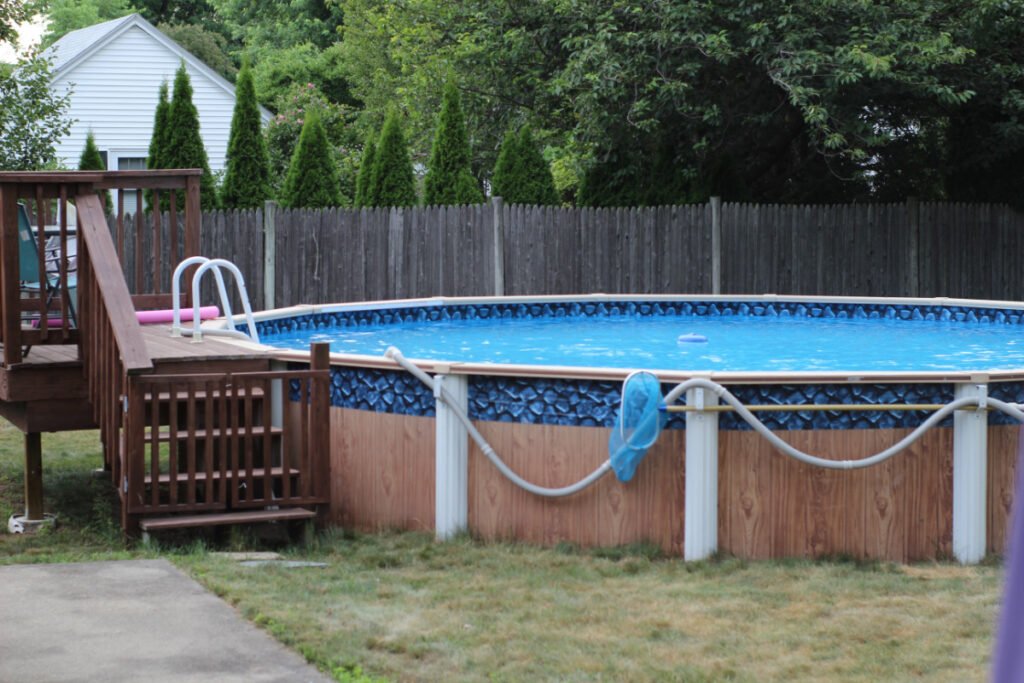
Keeping your above-ground pool clean is essential for a healthy swimming experience. It is essential to do routine maintenance to keep your swimming pool clean throughout the summer. In addition to using a vacuum cleaner, here are some useful tips for maintaining your above-ground pool’s cleanliness.
✔Test Your Pool’s pH Levels Regularly.
Perform a pH test on your swimming pool at least once each week. If the right pH balance is maintained, it is easier to avoid the formation of algae and bacteria, which may irritate the skin and the eyes. The pH level of an above-ground pool should be between 7.2 and 7.8, at the very most. Utilize a testing kit to determine the pH balance and make necessary adjustments.
✔Skim the Surface of Your Pool Daily
It is important to routinely clear the surface of your pool of any debris, such as leaves and insects. It stops them from dropping to the bottom of the pool, where they would clog the filter and cause a mess. Make use of a skimmer net to collect any material that is floating on the water’s surface.
✔Backwash the Filter
Backwashing your filter is essential to maintaining proper water circulation and filtration. Be sure to backwash your filter once a week or as recommended by the filter manufacturer’s instructions. The backwashing frequency may vary depending on the filter size and the debris in your pool.
✔Empty Skimmer and Pump Baskets Regularly
The skimmer and pump baskets collect debris that the filter doesn’t catch. Regularly check these baskets and empty them when they are full. It ensures that the filter and pump can work efficiently.
✔Store Your Vacuum Cleaner Properly
After use, rinse your vacuum cleaner thoroughly with clean water. Allow it to dry and store it in a clean, dry place. Ensure you neatly drain and coil all hoses. Proper storage helps prolong the life of your vacuum cleaner and prevents mold and mildew growth.
For summer swimming, maintain your above-ground pool clean and healthy with these recommendations.
Frequently Asked Questions
Q: Why does the pool vacuum stick to the bottom of the pool?
A: The pool vacuum sticking to the bottom of the pool can be attributed to a few common factors. One of the main reasons is inadequate water flow or suction. If your pool pump is not generating enough suction power, the vacuum may lose contact with the pool’s surface. To resolve this, ensure the pool pump and filter are clean and functioning correctly. Another factor could be air trapped in the vacuum hose, which disrupts the vacuum’s ability to maintain contact with the pool floor. To address this issue, fill the vacuum hose with water before cleaning. Additionally, obstructions or debris in the vacuum head or hose can cause sticking. Regularly check and clean the vacuum components to prevent this from happening.
Q: How do you use an above-ground pool vacuum without a skimmer?
A: Using an above-ground pool vacuum without a skimmer is possible by employing alternative methods to create suction and clean your pool. One option is to utilize a vacuum head designed for above-ground pools, equipped with a telescopic pole and a vacuum hose. Fill the hose with water to remove any air, attach it to the vacuum head, and then connect the other end to a garden hose. Submerge the vacuum head and hose into the pool while holding the pole. Turn on the water to create a flow, and the vacuum head will pick up debris as you move it across the pool’s bottom. While this method may not be as efficient as a skimmer, it can still help maintain a clean pool when unavailable.
Q: What is the ideal vacuuming pattern for an above-ground pool?
A: The ideal vacuuming pattern for an above-ground pool typically involves dividing the pool’s surface into sections to ensure thorough cleaning without missing any areas. Start by selecting a side of the pool to begin your cleaning, then slowly move the vacuum head back and forth in overlapping straight lines, covering the entire pool length from top to bottom. Once you’ve completed one section, proceed to the next adjacent section, repeating the same pattern until the entire pool has been covered. This method ensures you do not miss any spots and helps distribute the cleaning effort across the pool. Additionally, it’s a good practice to occasionally change the direction of your vacuuming pattern to prevent any buildup of debris in one specific area.
Q: How often should I vacuum my above-ground pool?
A: The frequency of vacuuming your above-ground pool can vary depending on factors such as pool usage, environmental conditions, and the presence of debris. Vacuuming your pool at least once a week during the swimming season is recommended to keep it clean and free of dirt, leaves, and other debris. However, if your pool experiences heavy use or is located in an area with many trees or foliage, you may need to vacuum more frequently, perhaps every few days. Additionally, after a heavy rainstorm or if you notice a significant accumulation of debris, it’s a good idea to vacuum your pool to maintain water clarity and hygiene.
Conclusion
Congratulations! You have learned how to attach and use a vacuum cleaner for your above-ground pool. With these step-by-step instructions, you can keep your pool clean and ready for summer whenever you want to dip.
Remember to follow the necessary steps to prepare your pool for effective cleaning, such as removing the debris and optimizing the vacuuming process. Also, use the correct attachment method for the vacuum hose and head.
While cleaning your pool, focus on different areas, including the walls, floor, and hard-to-reach corners, to achieve a thorough and pristine pool. And once you finish cleaning, remember to remove and store the vacuum cleaner properly to ensure its longevity.
To maintain your pool’s cleanliness, use the vacuum cleaner regularly and follow other maintenance tips, such as maintaining the proper water balance, sanitizing the pool, and cleaning the pump and filter. If you encounter any problems with the vacuum cleaner, explore the common issues and troubleshoot them effectively.


